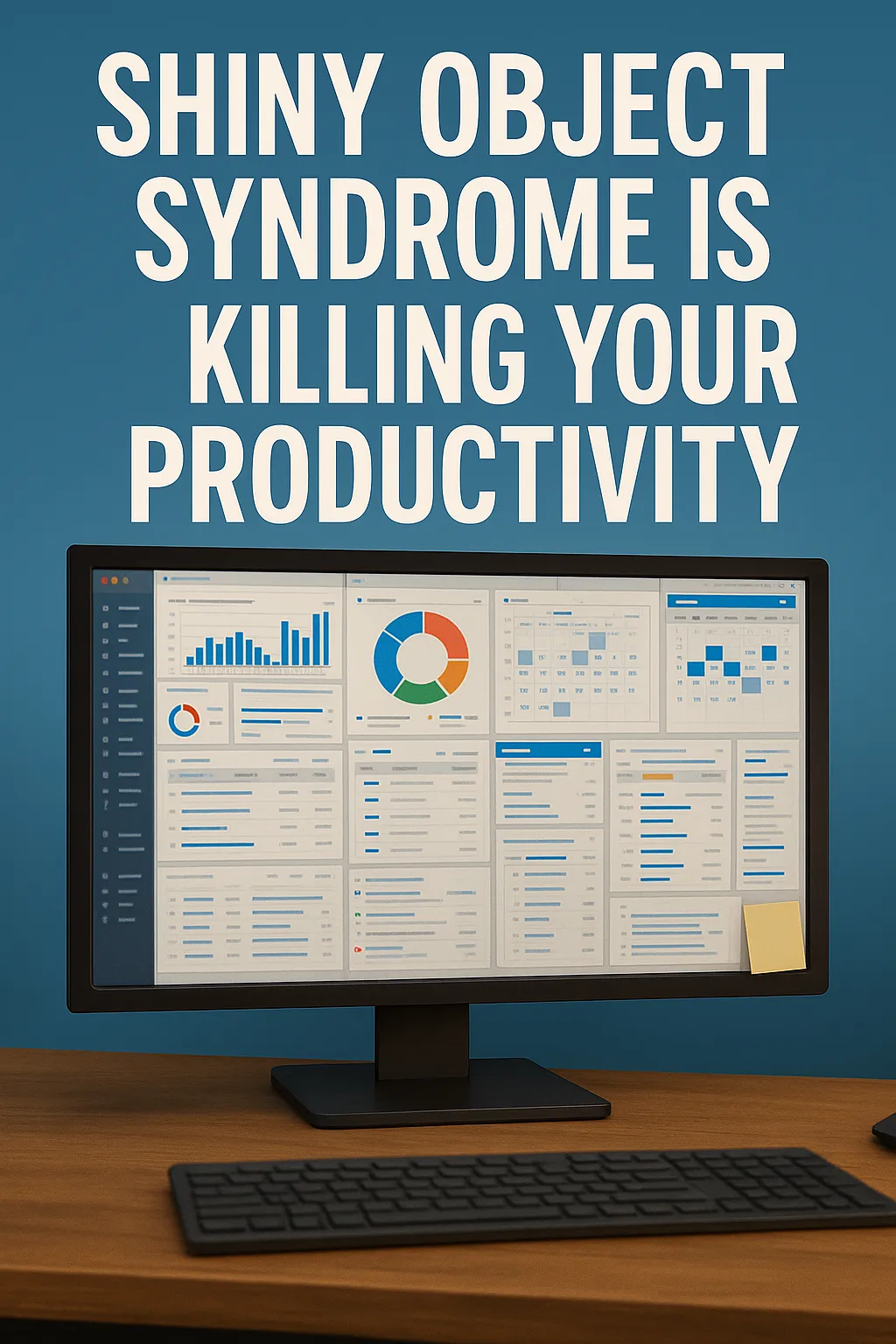
Shiny Object Syndrome Is Killing Your Productivity: How to Build a Tech Stack That Actually Works
We've all been there—staring at a dashboard that looks like it was designed by someone who's never actually sold real estate, wondering how something meant to make our lives easier just made everything more complicated.
The promise was simple: one platform to rule them all. The reality? You now need a PhD in software navigation just to send a follow-up email.
The Great Tech Paradox
Here's what nobody talks about in those shiny software demos: the fancier your system gets, the harder it becomes to actually use it.
I've been watching this trend accelerate, and agents everywhere are pushing back. They're tired of:
Dashboards with 47 different widgets they never use
Five different ways to accomplish the same task
Training videos longer than college courses
Features buried so deep you need a map to find them
Sound familiar?
The Real Cost of Feature Creep
When your CRM has more buttons than a NASA control panel, you're not getting efficiency—you're getting digital overwhelm. Here's what's really happening:
Time Vampires Everywhere
Simple processes now requiring multiple clicks and screens
Constant retraining as platforms "evolve" monthly
More time managing software than serving clients
Decision Fatigue
Too many options paralyze action
Analysis paralysis replaces quick decision-making
Energy wasted on tool management instead of client service
The Sunk Cost Trap
"We paid for all these features, so we should use them"
Forcing workflows around software instead of the reverse
Refusing to admit the "upgrade" made things worse
My 3-Question Tech Sanity Check
Before adding any new feature or platform, I ask:
Does this solve a problem I actually have? (Not one the software company says I should have)
Will this save me more time than it takes to learn and maintain? (Be honest about the learning curve)
Can I accomplish the same result with tools I already know? (Sometimes the "old way" is the right way)
If any answer is no, I pass.
The Power of Strategic Simplicity
The most successful agents I know aren't using the most sophisticated systems—they're using the right systems. They've mastered the fundamentals:
Contact management that actually helps them stay in touch
Lead tracking that shows clear next steps
Communication tools that feel natural, not forced
That's it. No bells, no whistles, no features they'll never touch.
Signs Your Tech Stack Has Gone Too Far
Time for a reality check. Your technology is working against you if:
You avoid certain tasks because the system is too complicated
You need to reference tutorials for routine activities
New team members take weeks to become functional
You find yourself saying "there's got to be an easier way"
You're paying for features you forgot you had
The Minimalist's Approach to Maximum Results
Here's my controversial take: less technology often means more productivity.
Start with these questions:
What are the three most important things your system needs to do?
What would happen if you eliminated everything else?
How much time would you save daily with a simpler approach?
Sometimes the best upgrade is actually a downgrade to something that just works.
Your Action Plan: The Tech Diet
This week, try this experiment:
Day 1-2: Track how much time you spend navigating your current system versus actually completing tasks.
Day 3-4: Identify the three features you use 80% of the time.
Day 5: Ask yourself what you'd lose if those were your only features.
Weekend: Research simpler alternatives that focus on your core needs.
You might be surprised by what you discover.
The Bottom Line
Technology should amplify your strengths, not create new weaknesses. The goal isn't to have the most sophisticated system—it's to have the most effective one.
Your clients don't care how many features your CRM has. They care about how quickly you respond, how well you listen, and how smoothly their transaction goes.
Maybe it's time to get back to basics.
What's your biggest tech frustration right now? Have you fallen into the feature-creep trap, or found a simple system that just works? Let me know in the comments—I'd love to hear your experience.
Tired of technology that promises everything but delivers headaches? My Scalable Success System focuses on simple, effective tools that actually save time. Schedule a free 15-minute strategy call to see if we can simplify your business operations.
